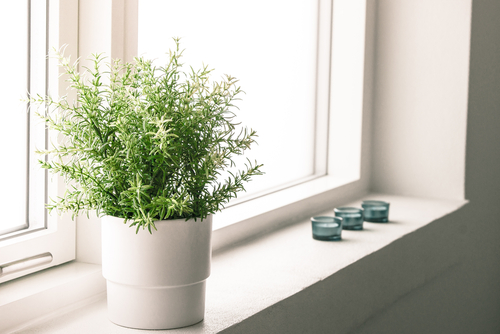Have you noticed as we get older, we tend to spend more time at home? It becomes a sanctuary and we start to cherish just how good it is to be there.
It means most of us are likely to be at home and indoors more than 50 per cent of the time, and that’s not counting the time we spend at work!
Even if you’re just making it home in time to fall asleep watching Netflix and you’re out the door again before 6am – you’ll still spend about 70 hours at your pad each week.
That’s a lot of time inside and, not surprisingly, behind closed doors the air we breath isn’t so fresh.
Air inside buildings is often more polluted than air outside: experts say
According to Doctor Fraser Torpy, the director of the Plants and Indoor Environmental Quality Research Group at Sydney’s University of Technology, air circulating indoors can contain a cocktail of pollutants – from inside and outside sources – that can have an impact on our health.
He explained to ABC News, indoor air is often polluted by heating, cooking, cleaning and even furniture which can emit:
- Carbon dioxide
- Carbon monoxide
- Nitrogen dioxide
- Sulfur oxide
- Volatile organic compounds (VOCs).
The CSIRO describes VOCs as chemicals released by plastics and synthetics that, in the home, can come from carpets, glues, computers, detergents and paints.
“Carbon dioxide and VOCs are often to blame for lessening the quality of our indoor air,” Dr Torpy said.
He says even at low levels these pollutants have been associated with symptoms like:
- Headaches
- Dry eyes, nose and throat
- A woozy-head feeling
- Nausea.
And, let’s not forget our role in this.
“Almost all the carbon dioxide indoors is going to be human exhalation but because world carbon dioxide levels are increasing so fast the rate is now getting really seriously high. It’s very easy to get to a level indoors where you are going to start seeing symptoms,” Dr Torpy said.
Don’t worry, a little greenery around the home can clear the air
Most of us already know it’s good to have plants inside but probably don’t realise the extent of their prowess at removing pollutants from indoor air.
NASA scientists conducted a study in the 1980s to find out if plants could purify air in space facilities.
The study found plants played “a major role in removal of chemicals from indoor air”.
According to Dr Torpy, even just one plant in a room is enough.
“Its capacity to remove those things is absolutely phenomenal,” he said.
“A medium-sized plant (anything above about 20 centimetres) in a room will make really big reductions to those particular chemicals.”
Are my plants better than yours?
Here’s a few handy lists of plants that’ve been found to be the best indoor cleaners:
- Eight toxin-filtering houseplants: Huffington Post
- Five indoor plants that are natural purifiers: Greenpeace
- The best air-cleaning plants according to NASA: Lifehacker
If only they’d do the vacuuming too.





